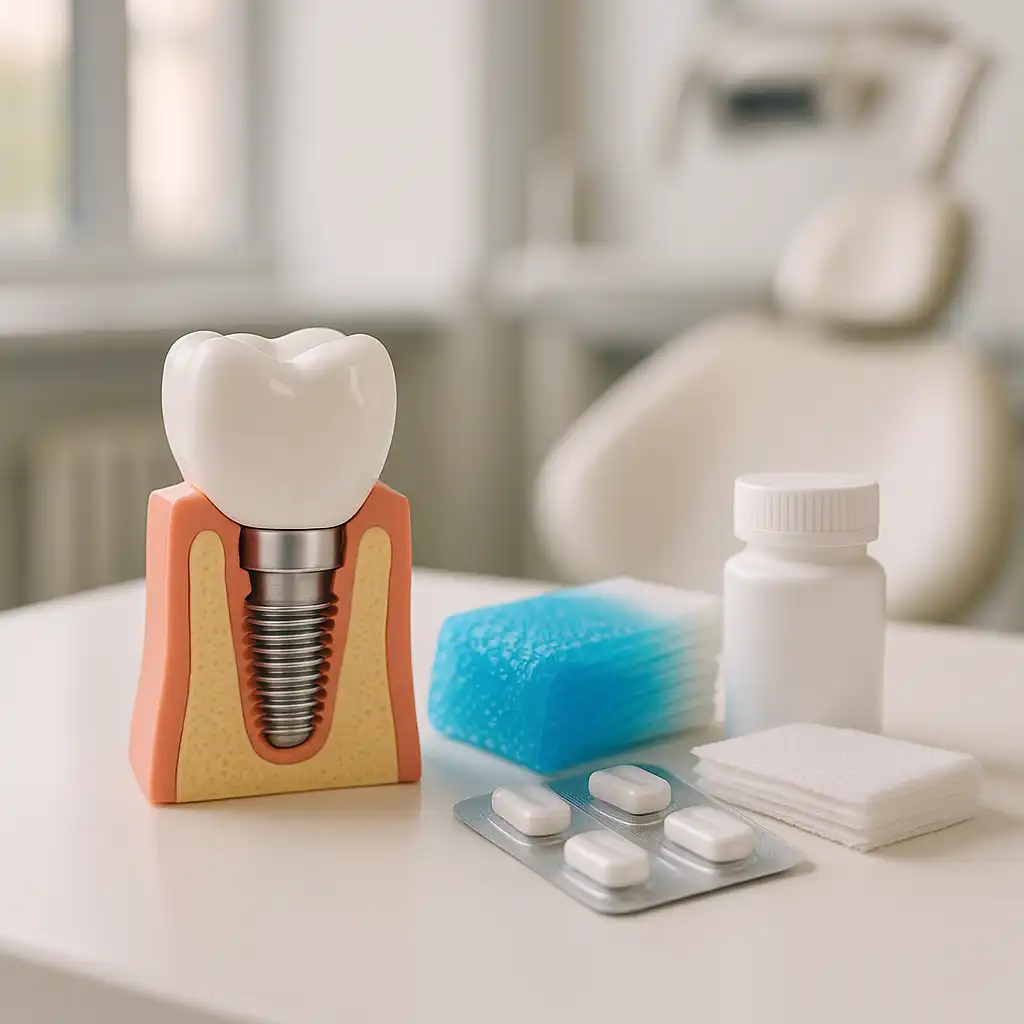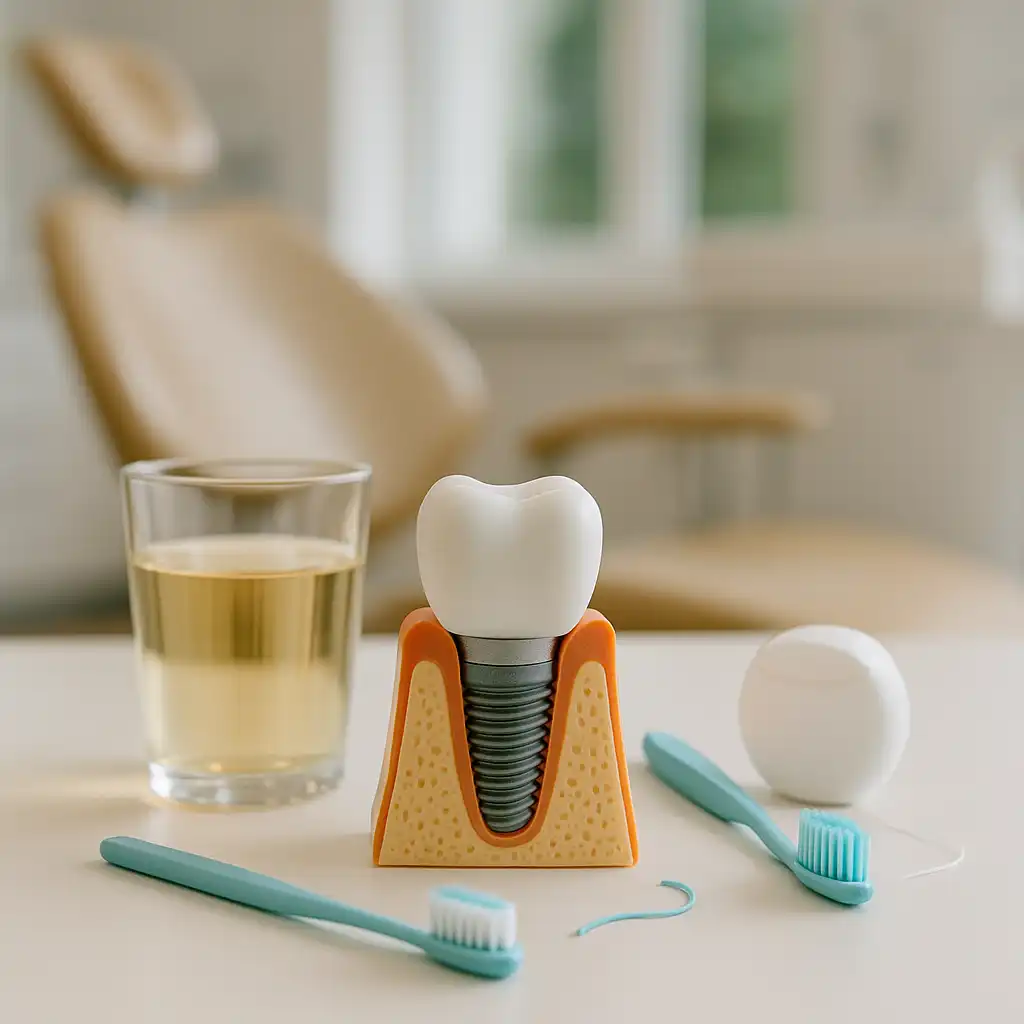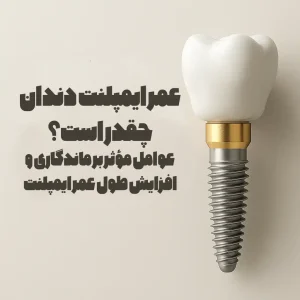Post-implant care is more complex than you might think. Following it carefully will not only speed up the healing process, but also increase the likelihood of long-term success. This guide covers the period from day 0 to 6 months after surgery.
It is recommended that you take a look at the following pages before reading this article:
Introducing dental implant services
Comprehensive guide to implants in Tehran
Costs and comparison of implant prices 1404
Typical patient experience of pain: Do implants hurt?
1. Before surgery: Mental and physical preparation
The efficiency of your own care is under scrutiny: from the day of surgery until the osseointegration phase is reached is the most sensitive period.
If you would like to know about the general stages of implants and their features, refer to the comprehensive introduction to dental implants.
Initial planning includes agreeing on medications, scheduling post-surgery appointments, and how to return to daily activities.

2. Days 0 to 2: Managing pain, bleeding, and swelling
a. Pain and medication
Mild to moderate pain is normal; take medications as prescribed.
If the pain persists for more than 48 hours or is not controlled with medication, visit or call the clinic immediately.
b. Bleeding and its rapid cessation
Slight bleeding is expected. Use sterile gauze and apply gentle pressure to the area.
Avoid gargling vigorously, spitting, or using a straw.
c. Swelling and rest
Cold compresses are most effective in the first 24 hours (15 minutes on, 15 minutes off).
It helps to have the head higher in relation to the body when lying down.
Heavy physical activity is prohibited during this period.
d. Nutrition in the first days
Lukewarm liquids, soft soups, purees, and smoothies (without using a straw) are the best options.
Avoid hot, hard, salty, or spicy foods or drinks until the initial inflammation has resolved.
3. Days 3 to 14: Oral hygiene and soft diet
a. Mouthwash (natural mouthwash)
From the second day onwards, use lukewarm salt water (one teaspoon in a glass of lukewarm water) 3 to 4 times a day and gargle gently.
Use strong antibacterial mouthwashes only if your doctor approves.
b. Brushing and cleaning thoroughly
Use a soft toothbrush to clean around the implant.
For small spaces between teeth, use a suitable interdental brush.
c. Continuous soft food
Continue to stick to a soft diet.
Adding more variety to your diet (fruit puree, mashed bananas, cool soup) can help, but avoid crunchy foods or fried potatoes as much as possible.
d. Activity and gentle return
Vigorous activity is still prohibited.
You can slowly return to light daily activities.
4. Weeks 3 to 6: Stabilization and gradual return
a. A more normal diet
If the gums respond well, gradually return to a normal diet, being careful around the implant area.
It is still essential to avoid chewing hard foods on the implant during this period.
b. Better periodontal health
A soft toothbrush, dental floss, and interdental brushes still play a role.
If you need training, refer to the article on basic toothbrushing.
c. Follow-up visits
Appointments for stitch removal or check-ups must be made on time.
Periodic checkups help the doctor assess bone density and implant status.

5. A few weeks to a few months: maintenance and final prevention
a. Hygiene and prevention of peri-implantitis
Brushing your teeth twice a day + using interdental tools daily is essential.
Don’t forget to get regular dental checkups and scaling. For more information, see Dental Scaling Service.
b. Avoid smoking and alcohol
Smoking is a factor in implant failure, at least until it is discontinued or, preferably, permanently stopped.
Alcohol should also be limited so as not to interfere with the restorative effects.
c. Protecting implants during sleep
If you grind your teeth or have severe pressure symptoms, talk to your dentist about a nightguard.







